The concept of narrowcasting in television was something that most networks had found pointless for decades, but throughout the 1980s and until the end of the 1990s the explosion of cable TV brought forth a wide array of new target demographics. ABC, NBC, CBS, and the new-comer to the major network scene, FOX, were all heavily involved in capitalizing on smaller markets. FOX had the most to gain as the newest network having just started in 1986.
FOX like other networks took advantage of the black audience, however their focus on narrowcasting in their production helped them kickstart their network. FOX grew rapidly because of this but their added diversity was not of their own desire to showcase their progressive political nature. The same can be said of the other networks as well.
By the late 1990s the networks found they could move on from the black sitcoms with only a few outliers outlasting into the 2000s. This utilization of the black audience was heavily financially motivated and more of a capitalistic chess move to expand audiences rather than something done out of the good will and politically and socially progressive ideology of an appreciation of black culture.
Despite these network’s appearance of helping increase the representation of black people on TV, the representations within those TV shows garnered controversy with critics suggesting that the black lifestyle was misrepresented. A 1993 NY Times article explains “…this is landmark television, evidence of a brave new realism in the portrayal of blacks, long overdue after 40 years of minstrels and sidekicks. To others, it is merely a richer, more elegant form of stereotyping…” The late 1980s and 1990s showcased a clear evolution in black representation where it was now not only acceptable to be black, but black aspects of culture were being outwardly promoted across American pop-culture, in music, film, and television.
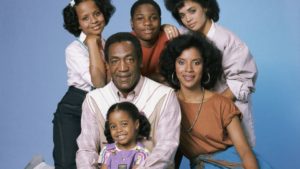
However many of the representations of black characters in television showed black characters in a very viewer-friendly style. The Fresh Prince of Bel Air for example showcased an extremely well-off black family largely because the typical white viewer that did not have direct relations to black culture was able to identify with the show’s comedy. The various black sitcoms aired across all the major networks grew tremendously popular with a variety of programmes attempting to convey a black life experience in a way that could be appealing to a general audience as well as the black audience they expected to capture.
Black sitcoms certainly weren’t a new concept in the 1990s. The 1970s was the true start of the genre with shows like The Jeffersons, Good Times, and Sanford and Son airing in the 70s, the 1980s posed an opportunity for networks to truly take advantage of the demographic to help build their network — especially with the added competition due to the cable TV explosion during the time. The 1970s opened the genre up to addressing the political and social issues of the time through an easy to digest comedic TV show. In Robin R. Means Coleman’s book “African American Viewers and the Black Situation Comedy: Situating Racial Humor,” she explains this era of black sitcoms as the “Lear Era” stating they would recognize black people and culture at the time, but their representation still segregated them largely from white culture. Good Times was particularly known for this with though to a selection of tropes and stereotypes that could be taken advantage of.
As the 1970s hits with the post-civil rights movement American culture had undergone some notable changes and the push for equality reached even television. Albeit some critics argue that the presentation of black characters in these shows were intentionally manipulating the reality of what the black experience in America was. Many producers tried to sugar coat the black experience by showing black families in happy supportive environments while the majority of black people were not benefited to that type of lifestyle. Good Times was an anomaly here out of the older shows where they showcase life in inner-city Chicago. Shows like The Cosby Show and The Jeffersons shows black families reaching the American dream.
The Cosby Show specifically marked a major change in the presentation of black people where black people were presented as though they had equal status in society, despite this not being the reality at the time. Coleman explains this era as “The Cosby Era” and though some may appreciate the goals of showing black representation in a more positive light, the reality is it was unrealistic and completely ignored the still prevalent racial and economic issues at the time. These tactics of making black life happier were used to make their programming more acceptable to a wider audience. A black sitcom could not directly confront racial issues during the 1980s lest they would be looked at as though they were opposing themselves to the white audience. Coleman explains in her book “We’re going to hit you over the head with a teasing about black life and culture, and we’re not going to indict whiteness as much.”
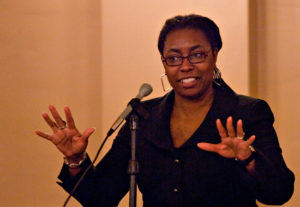
The black sitcom may have garnered the black audience but the presentation of the shows is heavily altered to make black culture more approachable to a mainstream audience. FamilyEducation.org explains that this is done also in part for economic reasons. “From the viewpoint of the networks and their advertisers, there is more profit to be made by attracting white viewers, since they represent the significant majority of our population.”
An interesting tie-in to this idea that black sitcoms must be appreciable to the white audience is the notable lack of mixed race television shows. TV has been extraordinarily segregated with this being especially so in the 1980s and 1990s. Popular shows like Friends, Full House, and Seinfeld (among others) offered almost entirely white casts throughout the collective 27 seasons these shows aired. In the same vain, many black sitcoms were similar with hardly any white characters being on those shows in the 1980s and 1990s. A black character in a white show becomes too much of a political message and can become distracting for the viewer.
A key factor that added to the explosion of black sitcoms and majority-black casted TV shows was the outburst of cable TV in the 1980s and a renewed interest for networks to look into narrowcasting their demographics. The concept of narrowcasting became incredibly more attractive now that consumers had more choices. Before this moment most networks fought to make their individual shows as universally appreciable as they could. The goal was to capture the mainstream audience and if they needed to isolate minorities in the process they felt financially permitted to do so. Americans saw their television selection transition from a few major channels to dozens of options. The new space on the “airwaves” led to a huge variety in programming, with channels like ESPN, CNN, HBO among other channels debuting at the time.
FOX was the sole network that took aim at the major network stations like NBC, ABC, and CBS. FOX showed itself to be a competent competitor to the major networks early on with its backing from Rupert Murdoch and News Corp. The network started in 1986 and grew popular in the few years after leading into the 1990s. A huge factor in FOX’s success was their successful black sitcoms among other narrowcasted programs they aired during the time with shows like 90210 targeting teenage girls and shows like COPS targeting young men.
While the big networks had already experimented with black sitcoms, they largely were abandoned by the mid-late 1990s. Shows like NBC’s The Fresh Prince of Bel Air aired its last episode by 1996, FOX’s Martin aired its last by 1997, and FOX’s Living Single aired its last by 1998. These are just a few examples, but the decline in black sitcoms is striking. While major networks abandoned the black audience by the mid 1990s, FOX did show an ability to hold on to the audience a bit longer. Even into the 2000s when hardly any black sitcoms were airing they held steady with The Bernie Mac show.
FOX showed a willingness early on in its history to stray from the traditional industry formats with its two hit intial shows being Married With Children and the sketch comedy show The Tracy Ullman Show. Married With Children showed FOX executives that they could create a network with shows that did not exactly conform to what many Americans were used to in a traditional sitcom. This gave them more freedom with their willingness to explore black sitcoms in the 1990s. The network aired Roc, Martin, Living Single, The Crew, among other shows to air the most black sitcoms in the 1990s out of any of the major networks.
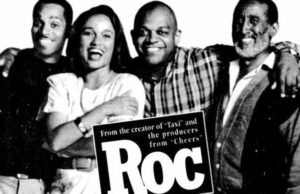
Though these shows did not quite live up to the popularity of shows like NBC’s The Fresh Prince of Bel Air and ABC’s Family Matters, as these shows specifically targeted a white audience as well. The FOX network was clearly taking a concentrated approach to offering as much content to attract the specific black audience and a majority of the minority watching all of the programming on their network. Shows like Martin and Living Single were in a particularly interesting situation where they were able to be profitable without capturing the white audience as well. Both shows were able to run for a respectable 5 and 6 seasons respectively. However, even for FOX by the late 1990s they had largely abandoned the black sitcom.
By 2001 just five black sitcoms were on air in the U.S. In fact looking at the majority of black sitcoms throughout all of history shows a particularly stringent approach to their broadcasting. Networks were overly cautious with black sitcoms and executives were more willing to close the curtain on black sitcoms than other shows. Robert F. Moss of the NY Times seems to think so in his 2001 article.
“All television programs live in the shadow of the ratings guillotine, but does the blade fall more quickly on a black show? Ask any African-American in the television business, and you’ll get a long list of classic white sitcoms — ”The Mary Tyler Moore Show,” ”Seinfeld,” ”The Drew Carey Show” — that had to be nurtured through difficult infancies by supportive networks.” – The New York Times, “The Shrinking Life Span of the Black Sitcom”
The idea of a black sitcom was still seen as something that could be slightly taboo for networks to air. If a show didn’t gain popularity quickly they could be subject to ending after even just one season — as was the case with FOX’s The Crew, FOX’s The Preston Episodes, and UPN’s The Hughleys. But even for shows that did gain popularity and a consistent audience, it is extremely rare to find a show in black sitcoms that would air longer than five seasons. Even The Fresh Prince of Bel Air which is arguably the most widely beloved and recognized black sitcom in recent history aired just six seasons while a show like Seinfeld aired 9 and Friends aired 11.
While there is certainly arguments to be made saying this is simply because these were “better shows” the trend in black sitcoms is clear that they are held to a stricter standard. Of the 111 black sitcoms that have ever aired on network television just over half of them have been have been cancelled after one season. (Brennan Williams, Gazelle Emami 2014)
The trend continued into the 2000s, however today some argue that we may soon see a resurgence. The latest popular black sitcom “black-ish” is reigniting the potential for racial and other social issues to be confronted again in America, but currently the situation for black sitcoms and a greater representation of black culture in general in America is much bleaker than it was in the early 1990s. While there are some black sitcoms today that are popular like Tyler Perry’s House of Payne and Black-ish, the landscape has changed drastically in America’s media relation with African Americans. Networks had utilized the black audience in the 1990s with strict stipulations and specific guidelines for what could be considered acceptable and popular.
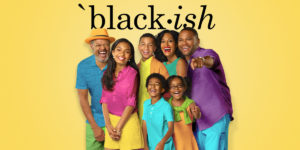
NBC, ABC, and CBS used the audience to focus on the relatively new narrowcasting potential that cable TV and brought forth while FOX had used the black audience to establish themselves as a new, formidable competitor to “the big three” networks that had already existed. Until the idea of approaching a black audience is again both economically viable and safe programming decision by executives, it is difficult to envision any true reason why the black sitcom would again rival its peak presence in the 1990s.
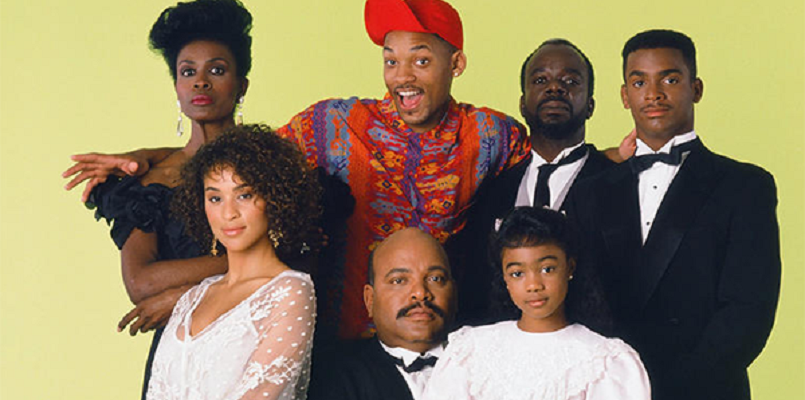
You must be logged in to post a comment.